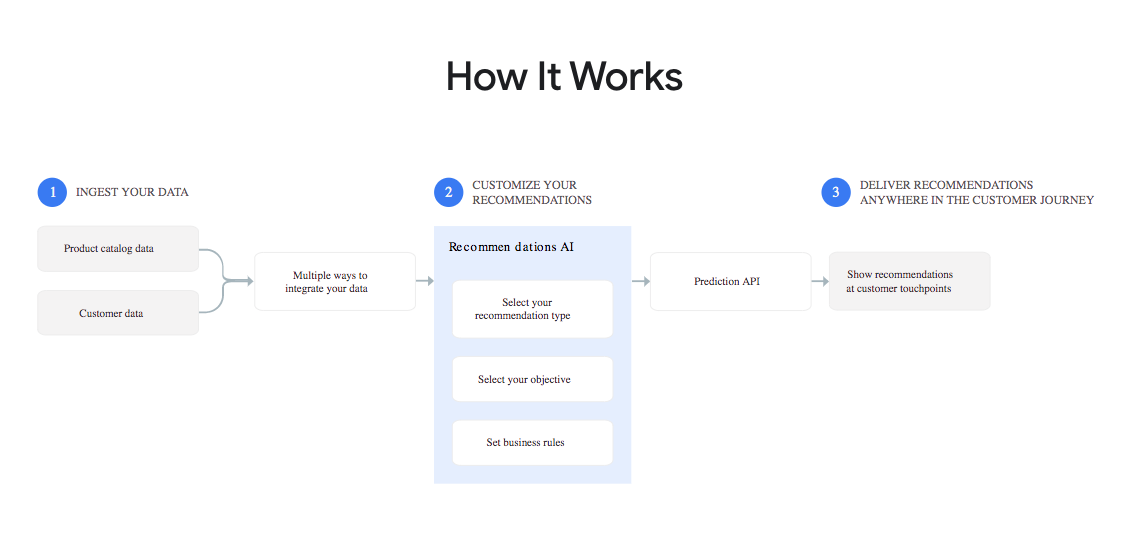If you’re anything like us, you’ve seen Terminator way too many times and now have a fear of artificial intelligence wiping out humanity.
Skynet, anyone?

But in all reality, the AI that’s making waves in the industry isn’t hunting people (not for now at least). Rather, it’s being used by big companies like Google, Amazon and other search-based websites to enrich our results – helping people find the closest thing to what they have in mind when they search, and ultimately making the whole experience more pleasant.
One of the realms in which AI is making bold new changes is eCommerce. Global eCommerce sales are expected to cross $4 trillion by 2020 and reach $4.88 trillion in 2021. Keep reading to learn the ways in which AI is contributing.
Machine Learning
Machine learning is exactly what it sounds like: machines gathering data and using algorithms to make sense of it all, consequently making more accurate predictions for future decisions based on these learnings.
Google has been at the forefront of machine learning, using it to update its search algorithms. When users put in search terms, the machine learning tech stores the countless number of searches made by everyone using Google into a database. The algorithms are then inputted to consider the optimum results of these searches (i.e. did the customer find what they were looking for?) and then learns how to improve searches in future.
With eCommerce in mind, particularly fashion, machine learning will help users receive search results that cater to their size, preference of colour, the brands they like and anything else that becomes a relevant factor to their online shopping searches.

Recommendations
Another way that AI is becoming evident to customers is through product recommendations. Popular with services like Netflix, recommendations appear as a means of keeping consumers on the platform based on the user’s viewing history.
AI also plays a big role in future recommendations when it considers customer feedback, attempting to understand whether customer needs were met with a particular product and what similar things can be recommended.
Here’s how it works.

This sort of AI performs extremely well, with businesses claiming they experienced a 90%+ increase in CTR and a 40% increase in conversions. By having this option built out early in your site or platform’s architecture, it’ll adapt in real time to make more accurate recommendations based on user behaviours as they happen.
As AI becomes more sophisticated, it will be able to predict our future needs based on previous purchases, becoming more like a personal shopping assistant rather than a machine that purely lumps similar products together per search.
Thought Vectors
Another area where AI is excelling is in the area of thought vectors. This technology ambitiously aims to increase the understanding a piece of software has of a sentence or an image. Instead of identifying keywords or locating synonyms to produce an accurate search, thought vectors enable search engines to understand the concepts behind a search or a lengthy document.
We can already see this in full swing with the Bert algorithm that came into play last year. Google’s algorithm has moved from keyword-based searches to a sophisticated method of ascertaining the intent behind the search. The whole idea is for the AI to understand natural language, the vernacular of everyday users.
For example, in countries around the world we often use different English words to refer to the same product – scooters and mopeds, peppers and capsicum, to name a few. This is where the algorithm will step in. It will attempt to understand that both peppers and capsicum are the same thing, and may show us results that have only been optimised for peppers, provided it offers the best answer to our search intent.
Who knows, with the right amount of levels, machines may be thinking and analysing data similarly to the way humans do in the near future. This will improve search infinitely! However, we’re still a long way off from then. Or are we….

Bots
The internet has so many bots working we’d might as well declare the online world as the state of Bot-swana.

Terrible jokes aside, bots are fast becoming the most popular use of AI for eCommerce. Businesses are increasingly starting to see just how important customer service is in obtaining repeat purchases. By having bots available for a variety of tasks, there’s a higher likelihood of purchasers having a good experience with a brand and thus purchasing from them again. Such tasks performed by bots include LiveChats for customer queries and questions, real time tracking to notify customers of their purchase locations, automated follow up messages to gain valuable feedback as well as a whole host of bots that make the buying process much easier.
Customer service bots are now increasingly becoming the new standard for eCommerce businesses as they’re comprehensive, don’t require face-to-face contact and are accessible at all hours of the day. Around the clock service no matter your location? What customer wouldn’t love that?
Plenty of advancements in the area of AI have made it easier for businesses to do well online. From customer service to streamlining work, AI is addressing needs and making work a whole lot less cumbersome.
If you’re keen to find out what bots or programs can help you run your business better, get in touch with the team at Impressive. We’ll assess where you’re at and show you opportunities to grow that you may have missed. For a free consultation with one of our specialists, leave us your details and we’ll be in touch.



